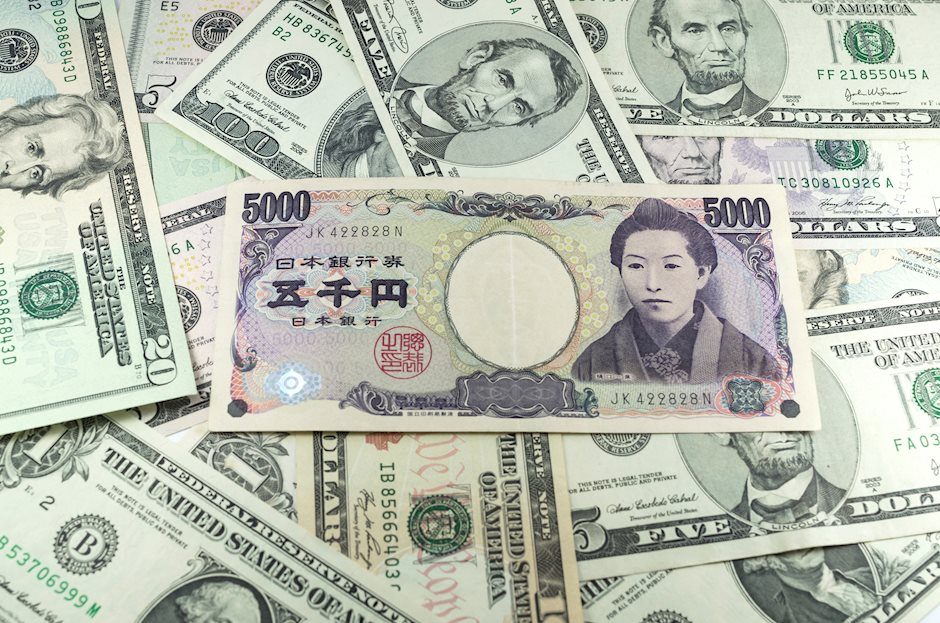Forex Today: Choppy market action continues as markets await next catalyst

Here is what you need to know on Wednesday, August 28:
After edging lower and touching its weakest level in over a year near 100.50, the US Dollar (USD) Index stages a rebound toward 101.00 in the European session on Wednesday. The economic calendar will not feature any high-tier data releases midweek and investors will continue to pay close attention to comments from central bank officials and geopolitical headlines.
US Dollar PRICE This week
The table below shows the percentage change of US Dollar (USD) against listed major currencies this week. US Dollar was the strongest against the Euro.
| USD | EUR | GBP | JPY | CAD | AUD | NZD | CHF | |
|---|---|---|---|---|---|---|---|---|
| USD | 0.36% | -0.11% | 0.16% | -0.42% | 0.04% | -0.20% | -0.53% | |
| EUR | -0.36% | -0.53% | -0.19% | -0.77% | -0.41% | -0.55% | -0.87% | |
| GBP | 0.11% | 0.53% | 0.23% | -0.31% | 0.11% | -0.09% | -0.42% | |
| JPY | -0.16% | 0.19% | -0.23% | -0.57% | -0.04% | -0.14% | -0.61% | |
| CAD | 0.42% | 0.77% | 0.31% | 0.57% | 0.45% | 0.26% | -0.13% | |
| AUD | -0.04% | 0.41% | -0.11% | 0.04% | -0.45% | -0.14% | -0.50% | |
| NZD | 0.20% | 0.55% | 0.09% | 0.14% | -0.26% | 0.14% | -0.34% | |
| CHF | 0.53% | 0.87% | 0.42% | 0.61% | 0.13% | 0.50% | 0.34% |
The heat map shows percentage changes of major currencies against each other. The base currency is picked from the left column, while the quote currency is picked from the top row. For example, if you pick the US Dollar from the left column and move along the horizontal line to the Japanese Yen, the percentage change displayed in the box will represent USD (base)/JPY (quote).
The modest improvement seen in risk mood made it difficult for the USD to stay resilient against its major rivals on Tuesday. Early Wednesday, US stock index futures trade virtually unchanged on the day. Meanwhile, the 10-year US Treasury bond yield fluctuates in a narrow range slightly above 3.8%.
The data from Australia showed early Wednesday that the Consumer Price Index rose 3.5% on a yearly basis in July. This reading followed the 3.8% increase recorded in June and came in above the market expectation of 3.4%. After touching a fresh 2024-high above 0.6810 with the immediate reaction to inflation data, AUD/USD lost its traction and retreated below 0.6800.
Bank of Japan (BoJ) Deputy Governor Ryozo Himino said on Wednesday that the financial and capital markets remain unstable and the Japanese central bank needs to monitor these developments with utmost vigilance. These comments don't seem to be having a noticeable impact on USD/JPY's action. At the time of press, the pair was trading in positive territory near 144.50.
EUR/USD edged higher on Tuesday but lost its bullish momentum after coming in within a touching distance of 1.1200. Early Wednesday, the pair stays on the back foot and trades near 1.1150.
GBP/USD extended its rally and reached its highest level since March 2022 above 1.3260 on Tuesday. The pair seems to have gone into a consolidation phase on Wednesday and was last seen trading below 1.3240.
Gold registered modest gains for the second consecutive day on Tuesday. XAU/USD, however, lost its traction early Wednesday and retreated below $2,510.
Risk sentiment FAQs
In the world of financial jargon the two widely used terms “risk-on” and “risk off'' refer to the level of risk that investors are willing to stomach during the period referenced. In a “risk-on” market, investors are optimistic about the future and more willing to buy risky assets. In a “risk-off” market investors start to ‘play it safe’ because they are worried about the future, and therefore buy less risky assets that are more certain of bringing a return, even if it is relatively modest.
Typically, during periods of “risk-on”, stock markets will rise, most commodities – except Gold – will also gain in value, since they benefit from a positive growth outlook. The currencies of nations that are heavy commodity exporters strengthen because of increased demand, and Cryptocurrencies rise. In a “risk-off” market, Bonds go up – especially major government Bonds – Gold shines, and safe-haven currencies such as the Japanese Yen, Swiss Franc and US Dollar all benefit.
The Australian Dollar (AUD), the Canadian Dollar (CAD), the New Zealand Dollar (NZD) and minor FX like the Ruble (RUB) and the South African Rand (ZAR), all tend to rise in markets that are “risk-on”. This is because the economies of these currencies are heavily reliant on commodity exports for growth, and commodities tend to rise in price during risk-on periods. This is because investors foresee greater demand for raw materials in the future due to heightened economic activity.
The major currencies that tend to rise during periods of “risk-off” are the US Dollar (USD), the Japanese Yen (JPY) and the Swiss Franc (CHF). The US Dollar, because it is the world’s reserve currency, and because in times of crisis investors buy US government debt, which is seen as safe because the largest economy in the world is unlikely to default. The Yen, from increased demand for Japanese government bonds, because a high proportion are held by domestic investors who are unlikely to dump them – even in a crisis. The Swiss Franc, because strict Swiss banking laws offer investors enhanced capital protection.
Author

Eren Sengezer
FXStreet
As an economist at heart, Eren Sengezer specializes in the assessment of the short-term and long-term impacts of macroeconomic data, central bank policies and political developments on financial assets.

















